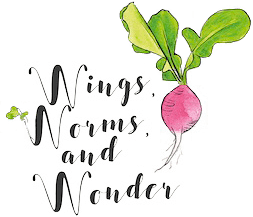Wonder Wednesday 137: Pen Painting
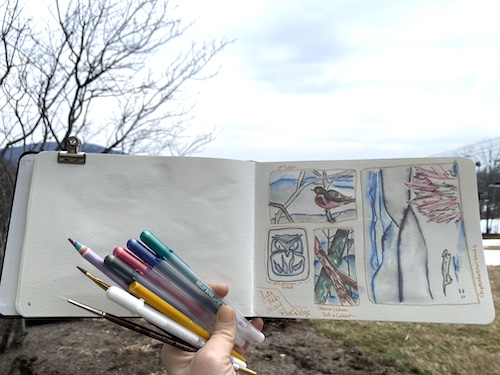
Pen Painting?
Sometimes you just want to sketch a little nature with some fun pens, but you don't want to get too serious or too involved. But you do want it to look kinda loose and interesting & a little more than simply a line drawing.
That's where pen painting comes in! This technique adds a watercolor feel to a sketch without dealing with paint. It's a fun way to add an extra touch to a drawing or boost a quick thumbnail sketch. It's great for nature journaling in the field because it is so transportable- especially if you use a waterbrush.
In this month's project we're making a page of thumbnail sketches of nearby nature we've observed over the past month, but you can use this technique for any subject matter at any size and any time, of course!
List of Steps
Materials
- Loose paper or sketchbook - mixed media or watercolor paper will be best
- Water soluble pens - You can try out any kind of fluid ink pen, or fountain pen, and different types have different effects. I used Sakura Gelly Rolls in this project because they have more opacity, and their ink is super juicy. (Plus I simply felt like using them because they are new and are the type with the metallic shimmer and that seemed fun to mix metallics in the water since my subjects included snow.)
- Paint brushes or a waterbrush
- Water
- Paper towel
- Pencil (& eraser if you want)
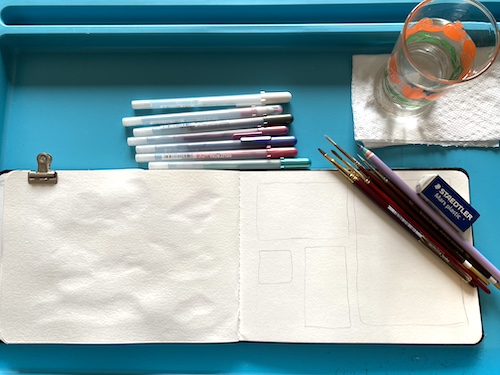
Preparation
This is a observational drawing nature journal thumbnail sketch project, so it is intended to be quick and loose.
Choose whether you want to do this out in nature on the spot, or from photos you've taken over the past month's nature walks.
(I chose from photos because it was snowing in all my subject choices. But the key is to stay quick and sketchy in a small format.)

Procedure
First, lightly in pencil, draw some boxes of various sizes and dimensions on your page.
You can make as many as you want to fill.
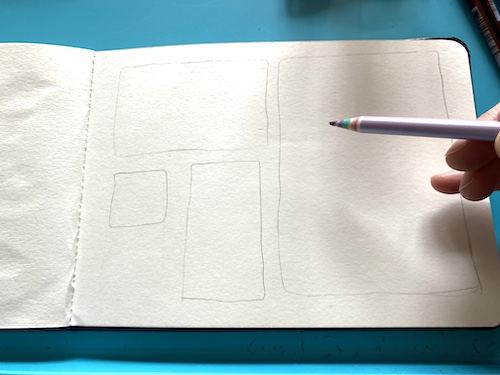
Next, lightly sketch in your designs. You don't need to make them super detailed or perfect.
These are fun nature journal thumbnails - observational drawings, not art masterpieces.
We are documenting some nature we've observed over this past month (or in a single sitting).
So keep it loose.
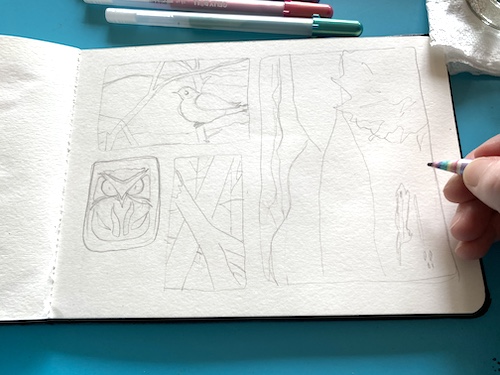
Once the sketches are in the thumbnail boxes, it's time to add the pen lines.
Trace your sketches and add in any details in the pen.
Have your water and brush ready because you need to brush over the wet pen lines with a wet brush so the ink will bleed into the water, like watercolor paint does in the wet-on-wet technique.
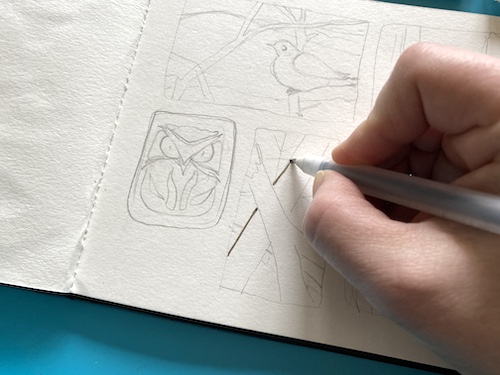
Play with how the ink and paint blend together.
What effect happens when the ink bleeds down into the water versus if you push water up into the ink?
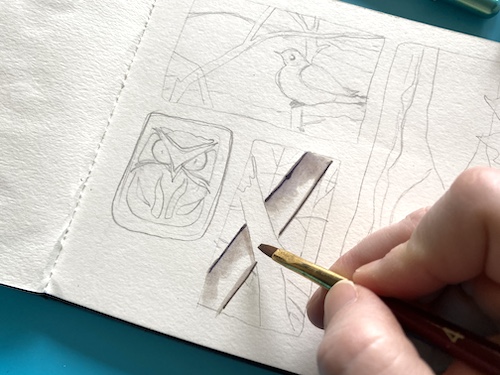
What about if you add ink to wet paper? How will colors blend?
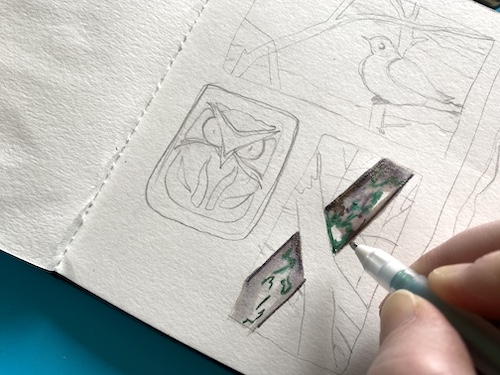
Pen Paint your way around your page filling the thumbnail boxes.
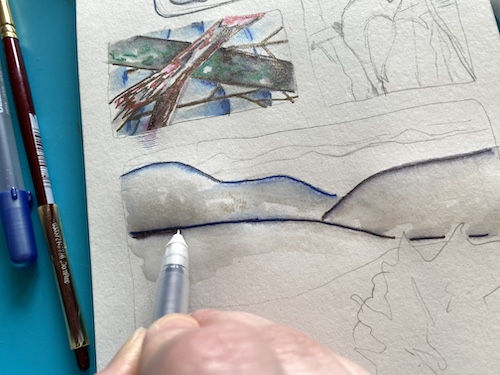
Remember to let areas dry, just like in watercolor paint, or else the colors have the potential to bleed into each other where you may not want them to.
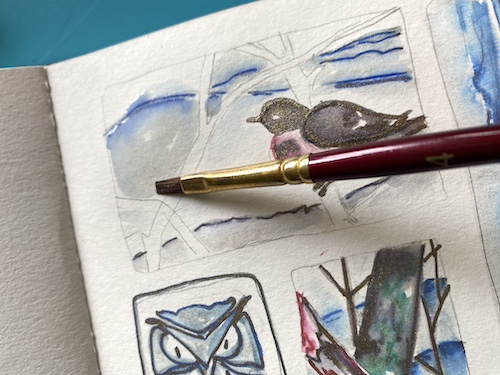
Finally, after the pen paintings are dry, define the outlines of the thumbnail boxes and add the time frame and any details you want to remember about the nature, the days, or the experiences.
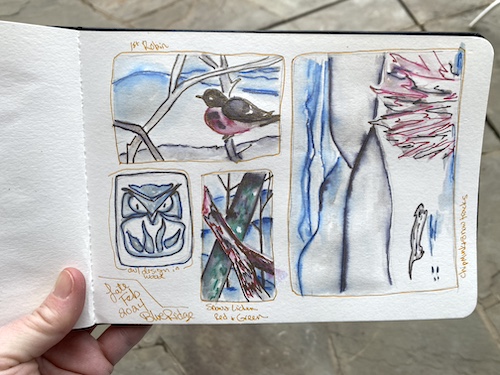
Seeds to Sprout:
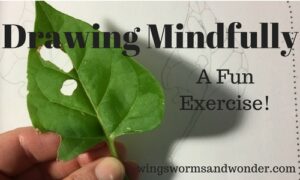
Drawing Mindfully
The trick to drawing is simply slowing down to observe, and draw what you actually see in front of you - and then practicing that repeatedly. That's it! Try this process oriented Mindful Drawing exercise to hone your observational drawing technique.
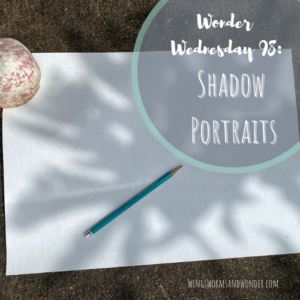
Shadow Drawing
Practice seeing with this Wonder Wednesday 98 project. Tracing is a great exercise in drawing what we actually see and when we trace shadows, the details are removed so we can focus on perimeter shapes. Try it!
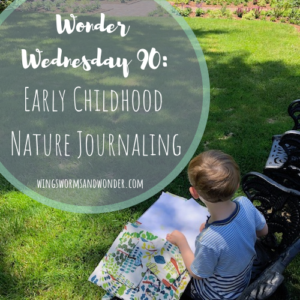
Early Childhood Nature Journaling
I'm often asked when is the right time to start nature journaling with children? My answer is as soon as they show interest in mark making! Learn more in this Wonder Wednesday 90 project about getting the 0-6 children in your life creatively connecting with nature journaling!
